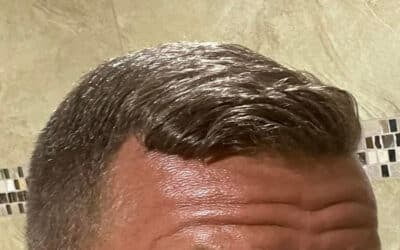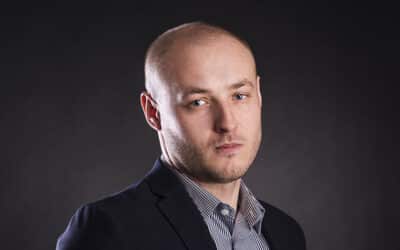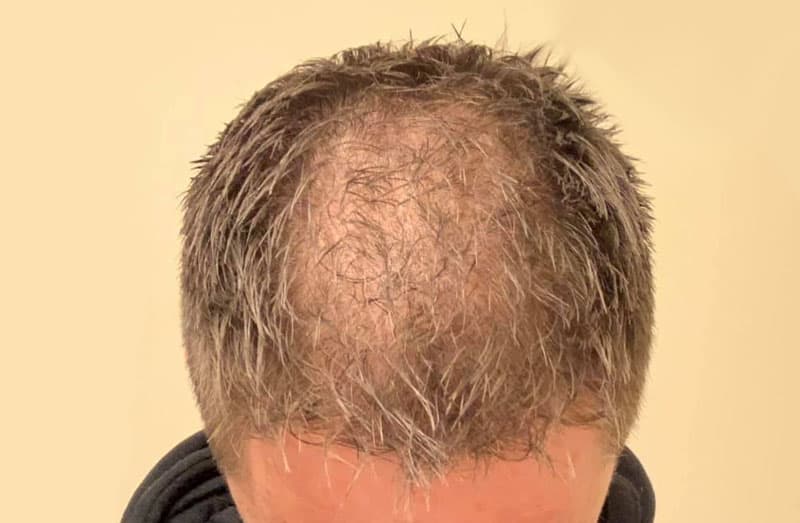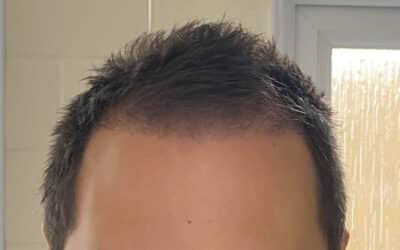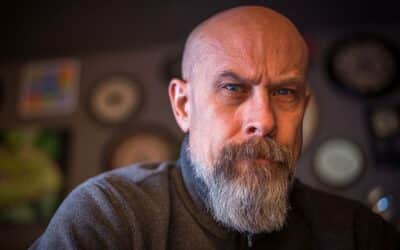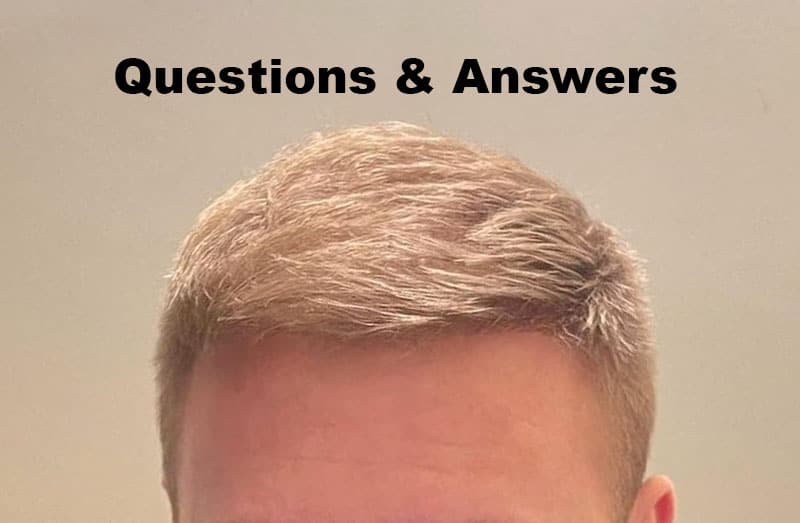There was a time when a surgical hair transplant did not even exist. Back in the 1880s, your only hair restoration option would be in the form of your local traveling “medicine man,”. A medical “jack of all trades and master of none”. He’ll cure your baldness! Your anxiety. Crankiness! Headaches! Scarlet fever, and more. He’ll even cure your puzzling inclination to fall down the stairs in the dark. An all-in-one, one-size-fits-all snake-oil miracle cure!
And while some of these snake oil cures very likely did a great job curing your headache (mostly due to the massive amounts of opiates they contained), they probably did as good a job of curing baldness as doctors did with hair transplants in the early days. Even up until recently, hair transplants were a mess of a procedure and the results were often terrible. With that said, it’s no wonder why so many dissatisfied hair transplant patients exist. But how can we stop this? How can you repair your disappointing past hair transplant results? Find out everything you need to know below.
The History of Hair Transplants and Past Hair Transplant Results
The first written record of a successful hair transplant treating baldness occurred in 1822 in Wurzburg, Germany. There, a fellow named Johann Friedrich Dieffenbach and his teacher, Dom Unger, managed to successfully transplant two entire hair follicles on Dieffenbach’s arm. This was after a multitude of failed past hair transplant results from the researchers at the time. Afterward, no other colleagues ever managed to perform Dieffenbach’s technique effectively. As a result, the method fell to the wayside, and later, into obscurity.
On the other hand, people around the world were on the hunt for a baldness solution. The first doctor to perform a modern style hair transplant was a Japanese fellow named Shoji Okuda in 1939. Doctor Okuda used 4mm cylindrical punches to extract hair follicles for successful transplantation. However, due to Japan’s reclusive nature right before WWII, this groundbreaking hair transplant technique remained hidden from the rest of the world for many years.
Later, the United States caught up with Japan in 1959, when a dermatologist named Norman Orentreich completed a successful hair transplant using 4mm punches. Doctor Orentreich is still widely heralded as the “pioneer of the modern hair transplant”. However, in 1970, he honored the work of Doctor Okuda and coined the term the “Okuda-Orentreich” technique. It was in fact the Okuda-Orentreich technique that gave birth to the “hair plug” transplant we all know and love. It was a stepping stone, but past hair transplant results from this technique left a great deal to be desired.

Past Hair Transplant Results from “Hair Plugs”
Back in the 1950s, a lot of things were very different. Most folks who were alive back in those days are now senior citizens. There’s no doubt they fondly remember gathering around the old radio that took front and center stage in the living room. If you were fortunate enough to be in one of only about 20% of American families who owned a TV at the time, then you were likely enjoying programming such as the Colgate Comedy Hour and Your Show of Shows.
It’s hard to believe that back in those days people were getting surgical hair transplants. In fact, the “Hair Plug” transplant was the traditional method of hair restoration from the 1950’s all the way to the 2000s. There was very little modification to the technique throughout all those years. It’s hard to believe that there was such little innovation in the field, however, it’s more common than you think.
In the beginning, a standard hair plug would involve the doctor using a 4mm hole punch tool that would remove a large circular portion of the scalp. This hole punch tool extracts the punched-out scalp bearing the growing hair follicles, then used to punch out a hole in the balding area. The punched-out hair-bearing scalp tissue was then just inserted into the hole in the scalp in the balding areas. Most of the time the doctors simply discarded the scalp tissue, bandage the donor area, and hope for the best.
All “Dolled Up”
Past hair transplant results of the hair plug method left patients with large empty spaces in between the hair plugs. Also, after a hair plug transplant, hair plugs ended up sticking out in all different directions. Consequently, this gave the transplanted hair a very unnatural look. The most used and best way to describe the results of the old “hair plug” method is to imagine what the hair on a doll’s head looks like, with just round groups of hair sticking up in every which way with large spaces separating the plugs.
Thankfully, as time went on, the hole punch method evolved. Doctors began to use smaller and smaller punches and the hair plugs themselves became smaller as a result. The end results from the hair plug method got better, but still not great. Interestingly, the whole hair transplant industry just kind of sat in stasis. With little innovation, more and more people opted for the toupee or wig. Finally, the paradigm shifted when the Follicular Unit Extraction (FUT) method was invented.
If you’ve found yourself in this situation and you look like the doll from Toy Story that the psychopathic SID had his way with, find a surgeon who knows how to prevent this from happening. A qualified surgeon knows how hair works. How hair flows, falls, and rests.
There are patterns to recognize, testing involved, and skills to learn in order to replicate the natural looks of our hair. Look for a surgeon who understands hair. Additionally, look for a surgeon who knows how to stitch up the scalp in order to avoid or hide the linear scaring as much as possible. This is especially important if you’re trying to reverse past hair transplant results and come out looking spiffy!
The Birth of the Follicular Unit Transplantation (FUT) Technique
In the ’90s Dr. Bobby Limmer revolutionized the hair transplant industry by inventing and perfecting the process of extracting thin “strips” of hair-bearing tissue with a stereomicroscope. He followed by dissecting the strips into individual hair follicles for implantation, without having to punch out holes in the balding areas.
This technique, coined the Follicular Unit Transplantation, or the FUT technique, allow hair transplants surgeons to even out the “hair plug” look by ensuring that there was as little space between hair grafts as possible so that it would look more like natural hair growth. The FUT method of hair transplants quickly replaced the hair plug method of surgical hair restoration.
Today the FUT method is still frequently performed, although the technology used in the process has improved. The size of the graft incisions has become much smaller, which has enabled surgeons to place larger numbers of grafts into a given area of the scalp. Today, over 50 grafts can be placed per square centimeter, if appropriate for the patient and their hair transplant needs. (Alam, 2011).
Follicular Unit Extraction (FUE) Transplant Technique
Follicular Unit Extraction is a method of hair transplant where the surgeon extracts individual hair follicles from the donor area instead of “strips” like in the FUT technique. This method takes a great deal more time to complete than the FUT technique, as each and every hair follicle is extracted individually, after making a tiny incision through the skin using a small needle-like device. Then, similar to the FUT method, the follicles extracted via FUE are processed and implanted into the balding area.
It is said that the FUE technique takes considerable time and expense to learn and develop the skills to a high standard. This is because the very survival of the follicular units depends on the surgeon’s skill at cutting around the hair follicles and then extracting it from the scalp without damaging it.
If extraction harms or damages the follicle, the likelihood of survival after implantation decreases. (William R. Rassman, 2008). Additional care must also be taken when extracting the grafts with forceps. Proper technique ensures the hair follicles are not crushed or manipulated too aggressively which could also affect the growth. (Park & You, 2017).
FUE and FUT Hair Transplants Gone Bad
A fact that needs to be understood is that a hair transplant is just like any other kind of minor surgery. There are a whole lot of things that can and will go wrong in a hair transplant if the doctor is inexperienced. Additionally, a patient who doesn’t follow doctor’s orders can mess things up for themselves. Trust us… we’ve seen it and we never understand why people sabotage themselves after all the hard work and money they spend to get the procedures.
A whole lot of past hair transplant results that end up looking barely short of horrific can be simply blamed on the lack of skill and experience of the surgeon performing the procedure. If your doctor has only performed a handful of hair transplants in their entire career, then it opens up a lot of possible issues that may occur. By far the most common problem that will arise is the longevity of the transplanted hair follicles.
You Didn’t go to a Hair Transplant Specialist
A problem that the industry is facing currently is that FUE equipment companies regularly market to plastic surgeons, dermatologists, and med-spas who do not employ physicians who are properly trained in hair transplant procedures. When you have a doctor that is not skilled in the proper extraction of hair follicles during an FUE and even a FUT procedure, then those follicles will likely die shortly after implantation. The result? The patient just wasted a whole lot of time & money and experienced pain and discomfort for no reason.
Dishonesty & Cashgrabs in the Industry
Another common problem that will cause some terrible past hair transplant results is when young men begin to suffer from hair loss and opt to get a hair transplant. Hair loss frequently happens to men in their early 20s and 30s. When these men seek professional hair restoration options, they receive a hair transplant from a not-so-reputable clinic or an inexperienced doctor. Don’t let this happen to you. Do your research!
Hair loss doesn’t just stop after you get a hair transplant. When genetic hair loss starts, it continues forever. When a young man goes and gets a hair transplant, the transplanted hair follicles persist and thrive However, untouched hair will continue to fall out. Eventually, as the young man ages, he will need additional hair transplant surgeries.
If you don’t continue to get hair transplants as the un-transplanted hair falls out, then the unfortunate fellow is left looking like he got a 1950s hair plug surgery, with scattered patches of hair around his scalp, with large bald areas in-between them.
Hair Transplant Infections
Another common problem that will completely mess up a hair transplant procedure is a bacterial infection. If you are in the hands of a capable and experienced hair transplant clinic, the entire procedure will be in a completely sterile environment. They’ll give explicit instructions on how to care for your scalp post-op and likely a prescription of antibiotics to take as a precaution. Unfortunately, as the popularity of hair transplant surgery skyrocketed, so did the number of unlicensed and back-alley “clinics” offering transplants for a fraction of the price of a licensed facility. Many of these clinics operate without proper or valid medical credentials, but they are also generally dirty and unsanitary.
Additionally, as we said above, some infections can result from patients who choose to ignore their doctor’s instructions. Do us all a favor and please listen to your surgeon. They know what they’re talking about. They do this for a living. And they’re looking out for you and have your best interests in mind. So, if you choose to skimp on quality or fail to follow directions, what can happen?
Don’t Go There!
Excessive bleeding, swelling, pain, warmth, burning sensation, and oozing pus-filled abscesses are some of the signs of an infection after a hair transplant. If left untreated the infection can lead to systemic symptoms like fever, lethargy, swollen lymph nodes, and vomiting.
The most serious risk from an untreated infection is if it spreads to deeper tissues in your body, such as your bones. If this happens, it can lead to septicemia, which can cause a sometimes-fatal condition called sepsis. Even if you treat the infection immediately, the is a good chance that the infection would lead to scarring that will negatively impact the results of the transplant and lead to patchy regrowth around the scars and a very unnatural appearance to the scalp and hairline.
Repairing Terrible Past Hair Transplant Results
Whether your botched hair transplant is just a relic of the past or the result of a greedy unqualified back-alley hair clinic, there are ways that you can fix the transplant. Most folks who have suffered from unfortunate hair transplants have become comfortable wearing a hat to cover up the obvious misfortunate that they had suffered. Sometimes it could even be that you are not particularly happy with the results of your transplant and just want it to look better.
Here at Best Hair Transplant LA, we have seen many different cases of people who are not happy with the hair transplants that they have gotten for a variety of different reasons. Some cases are worse than others, but the good news is that 9 times out of 10, past hair transplant results can be repaired. However, keep in mind that it’s always easier to start with a fresh canvas. Repairing a botched hair transplant is much more difficult than performing an original procedure. That’s why it’s so important that you select a competent doctor who’s skilled in fixing terrible past hair transplant results. Otherwise, you may end up even worse off than before – scared physically and mentally.
Choose a Different Doctor This Time!
One of the worst mistakes a patient can make is to return to the same clinic that messed up the hair transplant in the first place, expecting them to fix the mistake for free. Even if the physician does agree to try to correct the issues, if the doctor wasn’t skilled enough to perform the transplant correctly the first time, there is very little chance they will be able to correct the problem. Your best bet would be to find a hair transplant specialist that is skilled in the art of hair transplant corrective surgery.
The repair work that needs to be done to correct past hair transplant results depends on the issues the patient is facing. If there is significant scarring in the donor area and around the transplanted grafts, a skilled surgeon may be able to excise the scars and close the area, or to even manage to transplant healthy hair directly into the scarred area. If the patient has noticeable “hair plugs” as a result of an outdated procedure, those plugs can be carefully removed and replanted to make them look more natural. A poorly executed hairline can also be corrected by a skilled surgeon.
Find a Reputable Clinic With Great Reviews
We live in the internet age with reviews and galleries available at the click of a button. There’s no reason you should choose a crappy doctor to perform your hair transplant. Therefore, the first and most important step that needs to be taken when you are suffering from a botched hair transplant is to find a reputable clinic with skilled doctors. Do your research and then, schedule a consultation with the clinic that meets your needs and your standards.
In many cases the damage can be repaired; however, there are situations where it cannot. In a situation where the only possible donor area of the scalp has been over-harvested, meaning too much of the hair has been removed during the original hair transplant, then there will not be enough healthy hair to be transplanted in a second corrective procedure. During your consultation, any decent doctor will be able to evaluate the situation and tell you if a second procedure would be worthwhile. They’ll be honest and let you know if they can help or not.
Now it’s always worth getting a second opinion, as not all doctors are created equal and some are more skilled than others. However, don’t push your luck. When you’re looking to fix unsightly past hair transplant results, listen to the professionals. If two or more doctors refuse to work on you and warn you of the consequences, please listen to them and look for other correct hair care measures.
Corrective Hair Transplants at Best Hair Transplant Los Angeles
Here at Best Hair Transplant LA, we have seen some of the most terrifying botched hair transplants imaginable. We understand how impactful even a receding hairline can be on someone’s self-confidence, As a result, when they spend the time, money, and discomfort on a hair transplant to only have it fail, it can be devastating. When someone can’t even leave their house without wearing a hat or head covering due to a bad transplant, we know that it can seem like their situation is permanent and there isn’t anything that can be done.
We are here to tell you that there is hope. At Best Hair Transplant Los Angeles, we have corrected many different kinds of failed hair transplants from outdated hair plug techniques to excessive scarring due to infection and rejected hair grafts. We pride ourselves in how we take care of our patients and provide the very best hair restoration services available on the market.
Contact us today and set up a complimentary consultation and one of our skilled hair transplant specialists who will sit down with you and discuss how we can give you a full head of natural-looking hair you can be proud of.
SUFFERING FROM HAIR LOSS?
Best Hair Transplant is the best place to schedule your hair transplant in Los Angeles. We’ve helped both men and women regrow their lost hair. But don’t take our word for it. We suggest learning as much as possible about hair restoration. Do so prior to making a decision on how to address your hair loss. Not every procedure is right for everyone.
At Best Hair Transplant, we’re proud of our results and happy to provide hair restoration services. Additionally, we’re proud to make hair transplants affordable and help you save money on a variety of hair transplants.
To ensure your ease of mind, you can view our customer recommendations HERE. Furthermore, you can also see our Google reviews and Yelp reviews. We can’t wait to help you start restoring your lost hair.
YOUR HAIR RESTORATION SOLUTION
Best Hair Transplant
1970 S. Prospect Ave., Suite 2
Redondo Beach, CA 90277
(213) 403-0455
References:
- Alam, M. (2011). Evidence-Based Procedural Dermatology. Springer.
- Park, J. H., & You, S. H. (2017). “Various Types of Minor Trauma to Hair Follicles During Follicular Unit Extraction for Hair Transplantation. Plastic and Reconstructive Surgery.
- William R. Rassman, M. (2008). Hair Loss and Replacement For Dummies.

